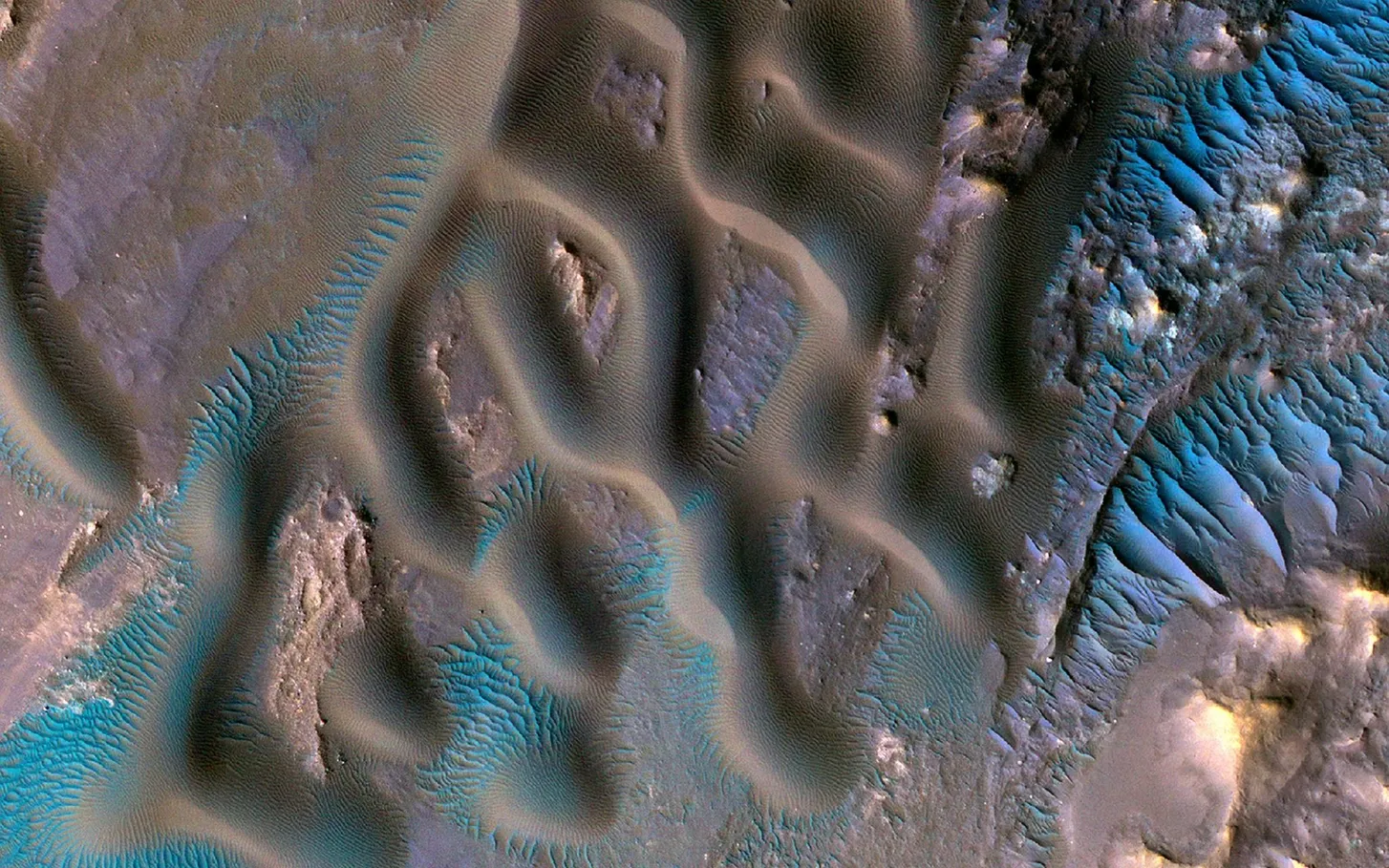

This HiRISE image shows a variety of wind-related features near the center of Gamboa Crater. Credit: NASA/JPL-Caltech/University of Arizona
Mars may be the Red Planet, but false-color images like this one can help us learn about its weather and geology. This High Resolution Imaging Science Experiment (HiRISE) image shows a variety of wind-related features on Mars near the center of Gamboa Crater, an impact crater that lies at the transition from Chryse Planitia to Acidalia Planitia. Larger sand dunes form sinuous crests and individual domes.
There are tiny ripples on the tops of the dunes that are only several feet from crest to crest. These merge into larger mega-ripples that are about 30 feet apart and radiate outward from the dunes. The larger, brighter formations that are roughly parallel are known as “Transverse Aeolian Ridges” (TAR). These TAR are covered with very coarse sand.
The mega-ripples appear blue-green on one side of an enhanced color cutout while the TAR appear brighter blue on the other. This could be because the TAR are actively moving under the force of the wind, clearing away darker dust and making them brighter. All of these different features can indicate which way the wind was blowing when they formed. Being able to study such variety so close together allows us to see their relationships and compare and contrast features to examine what they are made of and how they formed.